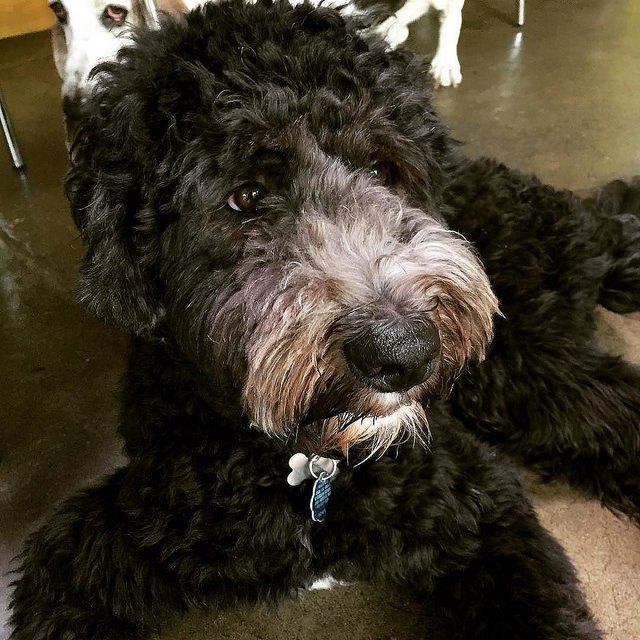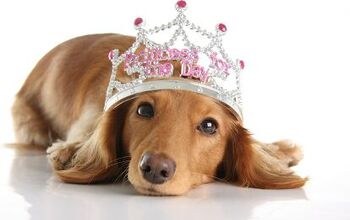Sheepadoodle


About Sheepadoodle
A fluffy gentle giant with a heart of gold- that’s the Sheepadoodle in a nutshell. These lovely dogs are best known for their easy-going nature, impressive intelligence, and affectionate temperament. Not to mention that they look like the most adorable enormous teddy bears- their cute looks have certainly helped the breed’s popularity! A designer dog breed, the Sheepadoodle is one of the rare and recent mixes, but nevertheless- these hybrids are rapidly growing in popularity.
Even though considered to be one of the designer dog breeds, these dogs are actually mixes of purebred dogs. The beautiful and lovely Sheepadoodle is a cross between a Standard Poodle and Old English Sheepdog that brings the best traits of both dogs to the mix. His love of anything “play” makes him a favorite pick for families with kids and other pets. In spite of his puppy-like nature, he’s a quiet dog with an eager to please personality which makes him easy to train. Of course, not to mention that the Poodle parent often ensures that the litters are low-shedding, which makes the Sheepadoodle a potentially good choice for someone with mild allergies.
Although no one can deny that the great combination of lovely looks and an even lovelier personality make Sheepadoodle sound like a dream dog for many, these big pooches might not be a perfect fit for every family out there. Like all dogs, Sheepadoodles have their own quirks and requirements- read on to learn all about them before bringing one of these designer dogs into your home.
The fun-loving Sheepadoodle is a cross between a Standard Poodle and an Old English Sheepdog.
Designer dogs first appear back in the 1980s and often blended the non-shedding characteristics of a Poodle with other popular breeds. The Sheepadoodle is among those designer dog breed who were created in hopes their coat will inherit the hypoallergenic qualities of their Poodle parent. So, even if we don’t know with certainty where or when the Old English Sheepdog and Poodle mix was first developed as a breed, it’s safe to assume it was within the timeframe of the ‘doodle craze’. In other words, it’s highly likely that the Sheepadoodle had its start in the United States, sometime in the last 20 to 30 years.
Even though there isn’t much information about the nitty gritty of the Sheepadoodle breed origin, the parentage of this hybrid speaks volumes about its qualities. Both the Old English Sheepdog and the Poodle have centuries of history behind them, during which they have been respected and treasured, first as working dogs, and then as family pets, to boot. It seems that, with such impressive parents, the Sheepadoodle has a bright future ahead of him!
The Sheepadoodle is a 50-50 percent mix of the Old English Sheepdog and the Poodle. This is a first generation mix, where there are equal parts of both breeds in the gene pool. There are also multigenerational Sheepadoodles (although they are rare), and they can have a varying percentage of one of the two parental breeds in their ancestry.
The Sheepadoodle’s crossbreed status means he doesn’t qualify for the American Kennel Club (AKC) roster of purebreds. As a result, these adorable crossbreed puppies don’t get to have official pedigree papers. His parent breeds however are long-time members; the Old English Sheepdog joined the “herding” group back in 1888 and is described as “adaptable, gentle and smart” while the Poodle joined the “sporting group” back in 1887 and is pegged as being “very smart, proud and active”. This means that, while your puppy won’t be registered with the AKC and have papers, their parents certainly will. A reputable breeder will provide insight into the family tree of the puppy, and offer a health guarantee, too. Avoid suspicious breeders who don’t have papers for their purebred parents and don’t offer any kind of assurances about the health and wellbeing of their dogs.
The Sheepadoodle is a large breed dog and will require a top quality kibble that meets his age, size and activity levels. Because he has a strong tendency to become obese as well as experience a digestive issue known as bloat, your dog will need to be fed 2 to 3 small meals throughout the day rather than free fed. Food should avoid fillers that will encourage him to keeping eating to feel full and exercise should be avoided right after meals because of the potential of bloat.
The gentle Sheepadoodle’s affectionate, playful personality makes him an ideal family pet.
The Sheepadoodle is a highly intelligent dog that quickly obeys commands and is eager to please. As a result, training will come fairly easily. Because he can be a bit brusque with other dogs, his socialization and obedience training should begin at an early age. As with any breed, a consistent, rewards based approach that includes verbal praise and treats is the best approach.
The weight of a Sheepadoodle is 60 and 80 pounds.
The gentle Sheepadoodle’s affectionate, playful personality makes him an ideal family pet. He is highly intelligent so early training will help tame his sometimes boisterous energy. This loyal pooch loves to be part of a family and while this makes him a wonderful companion dog, he doesn’t do well when left for long periods of time so a stay-at-home family member or regular dog walker would make the ideal home environment for him.
A cross-breed dog is typically free from the health issues parent breeds can experience however you need to know what your pet could potentially inherit. With the Sheepadoodle, he can be prone to joint issues, bloat, Cushings or Addisons diease as well as skin issues and certain cancers.
The average life span of a Sheepadoodle is 12 to 15 years.
The Sheepadoodle is a big boy who will need structured exercise routines and plenty of active play to keep him physically fit and mentally stimulated. He does have a tendency to get heavy in his older years so developing a regular routine early on will help prevent the joint issues that can come from obesity. These dogs love swimming and socializing so taking him to a dog park, lake or accessible river would be a great addition to your exercise regimen.
The Sheepadoodle’s affectionate personality makes him an ideal family pet.
The Sheepadoodle goes by many names including Sheep-A-Poo, Sheepapoo, Sheeppoo, Sheepdogdoodle, Sheepdoodle and Sheepdogpoo. As a Designer Dog he is ineligible to join the American Kennel Club (AKC) however he is recognized by the Dog Registry of America, Inc. (DRA), the American Canine Hybrid Club (ACHC) and the International Designer Canine Registry (IDCR).
While the Sheepadoodle has inherited the low-shedding properties of the Poodle, his long hair will require regular brushing to keep him matt- and tangle-free. With this much hair, you can expect regular trips to a groomer to keep it trimmed and him looking his best. Bathing can be done as needed and is typically sufficient if done when he is being clipped. Because he is a floppy eared dog, ear inspection and cleaning should be part of his weekly grooming ritual to prevent infection.
Sheepadoodle puppies are bright and typically well-behaved – which makes them great for training while they’re young. They love to play from puppyhood to adulthood and investing in some squeaky chew or puzzle toys will be sure to keep him occupied for hours when crated.
Photo credit: Judi Knight/Flickr; MN Sheepadoodles/Bigstock; Colleen Baskin/Flickr

Sharing space with three seriously judgy Schnoodles and a feline who prefers to be left alone. #LivingMyBestLife
More by Mary Simpson
























